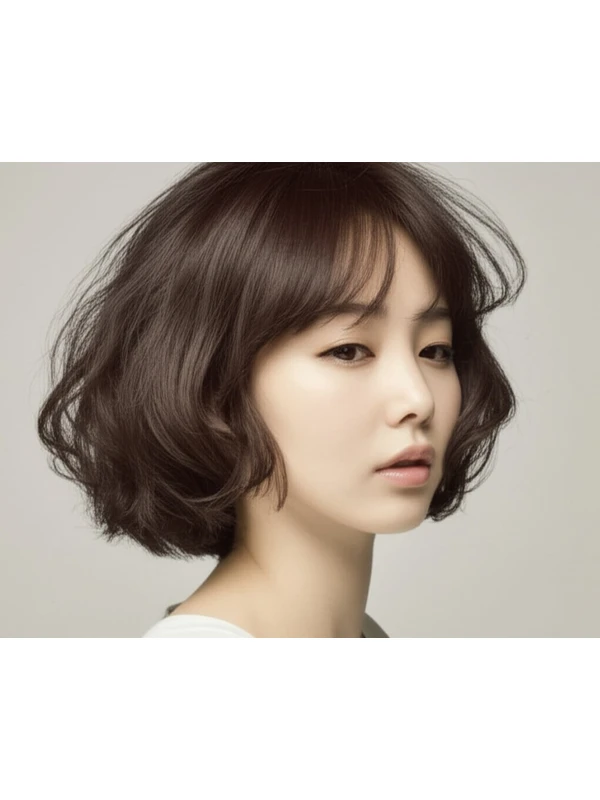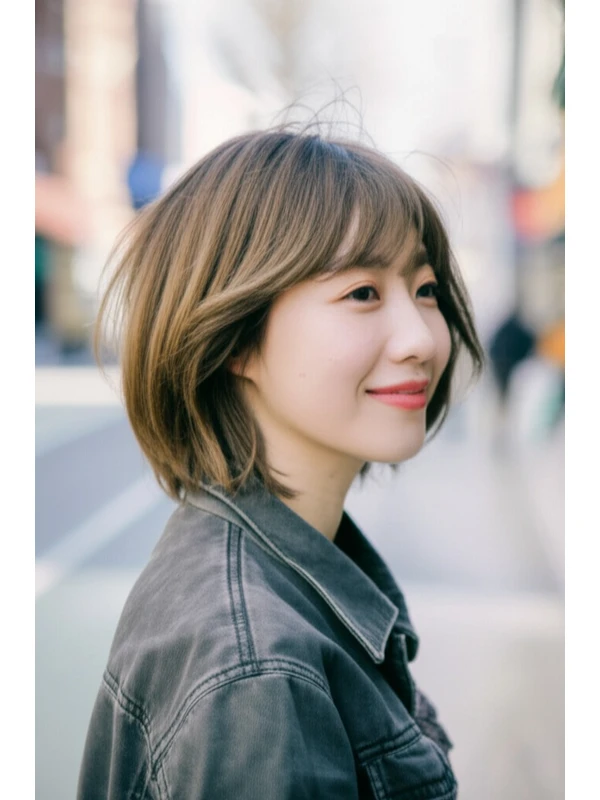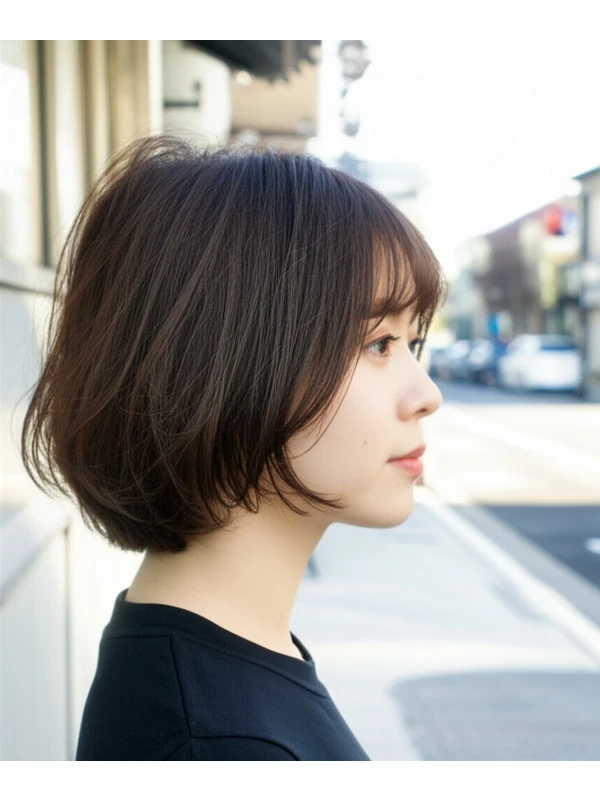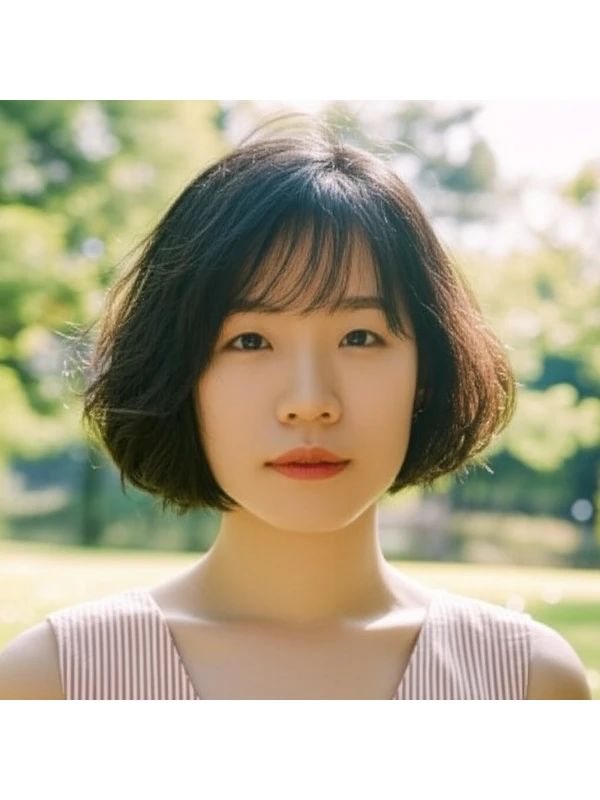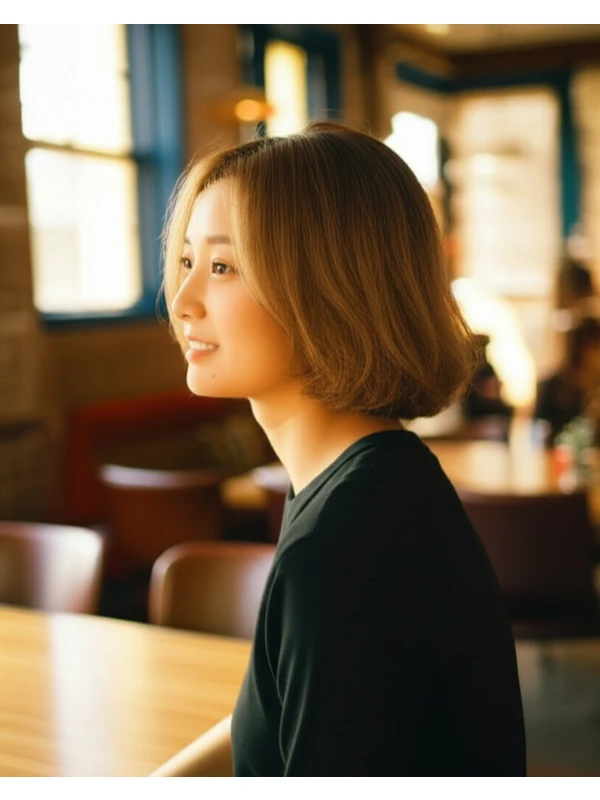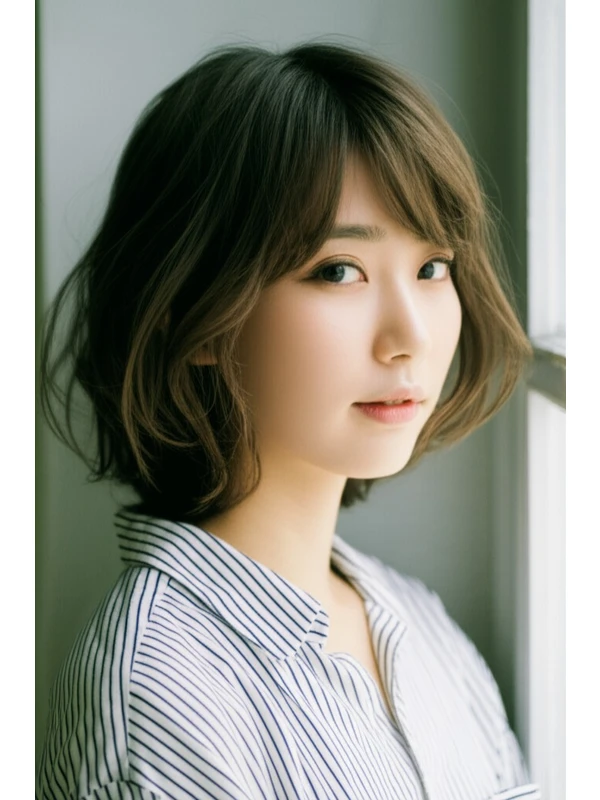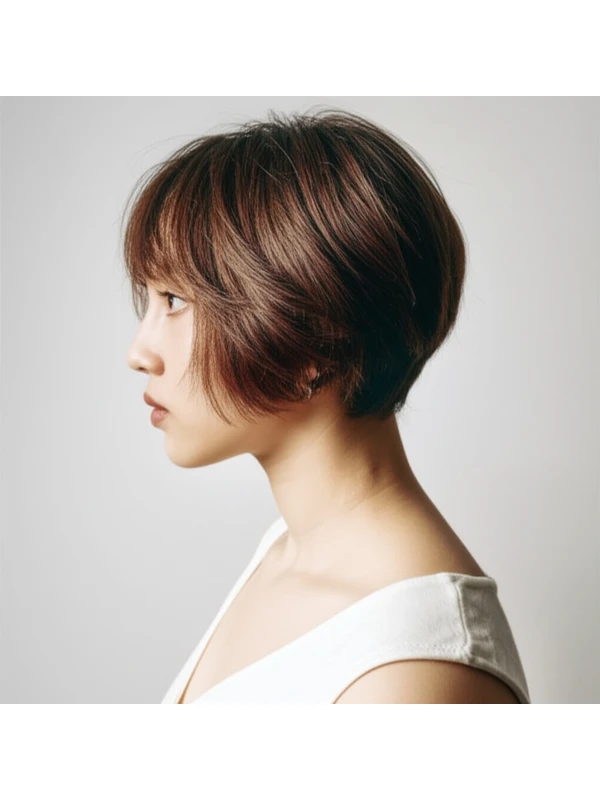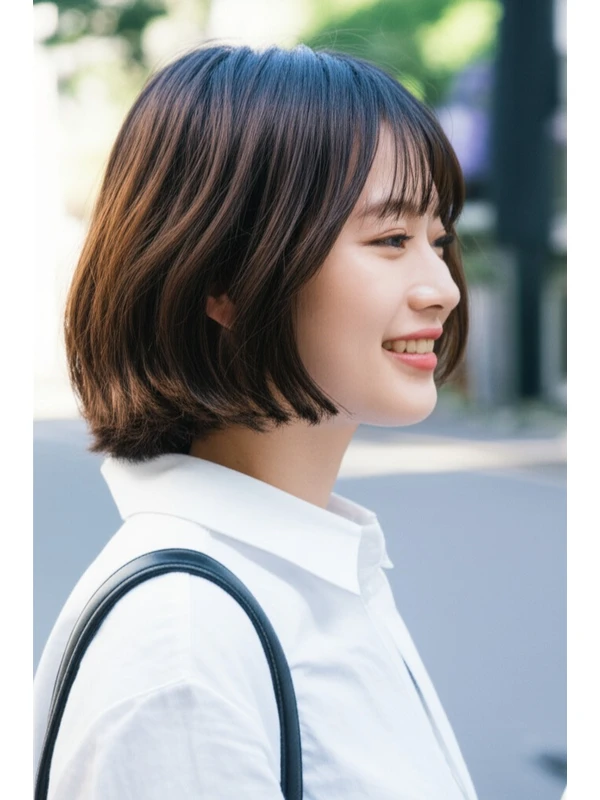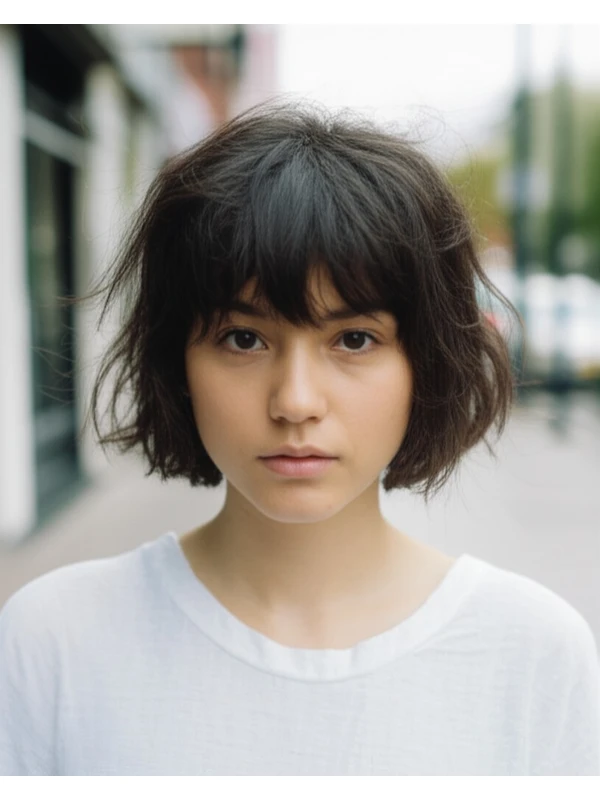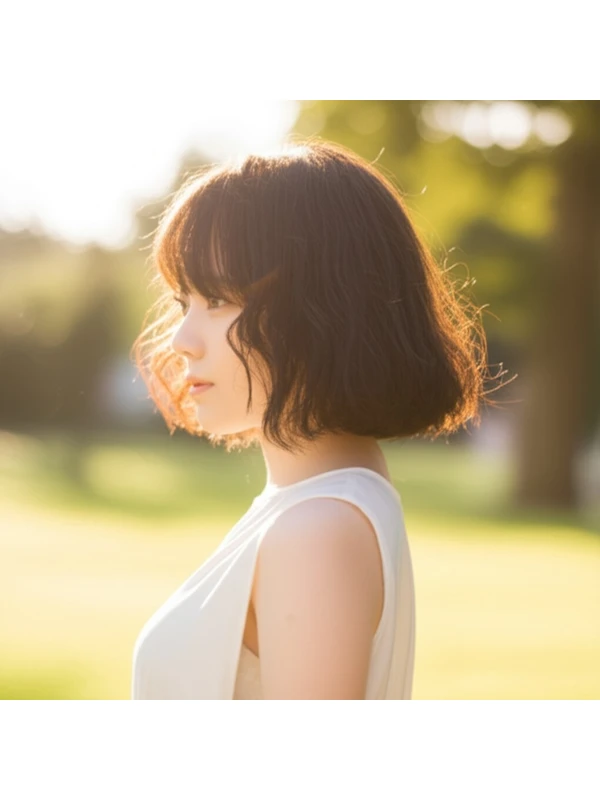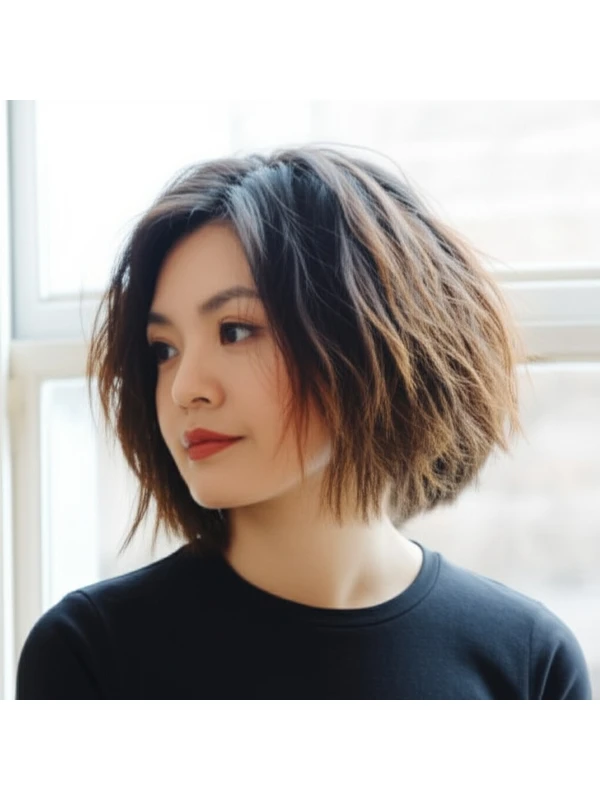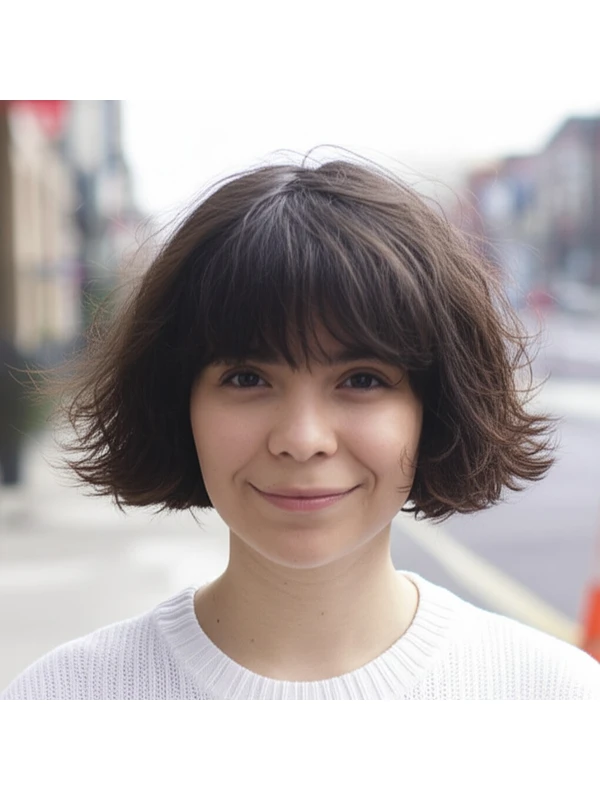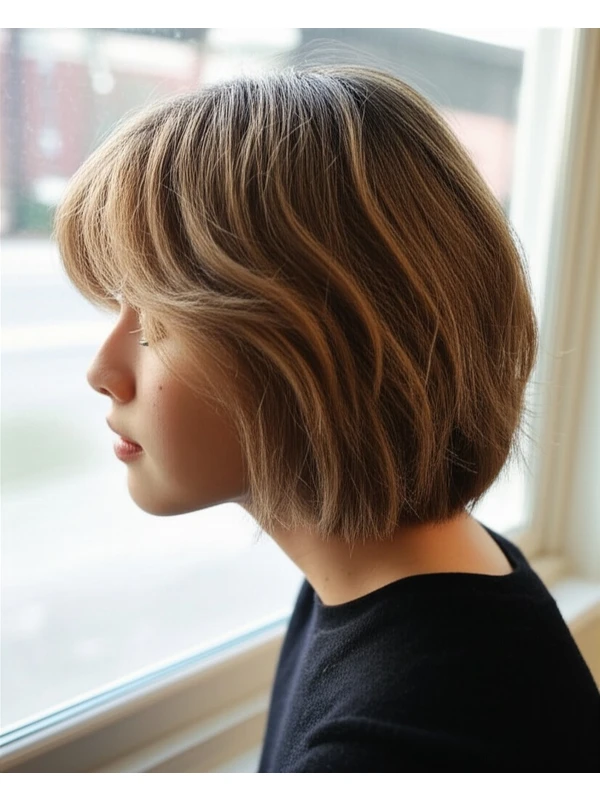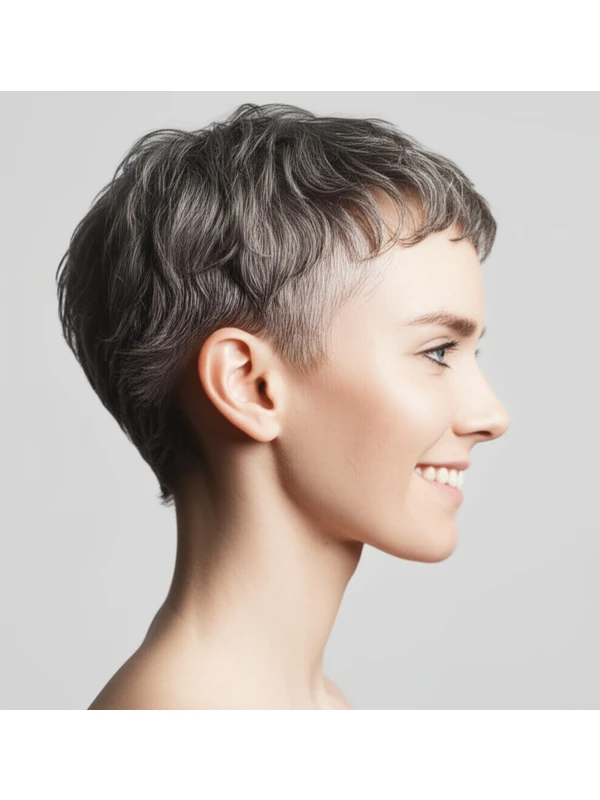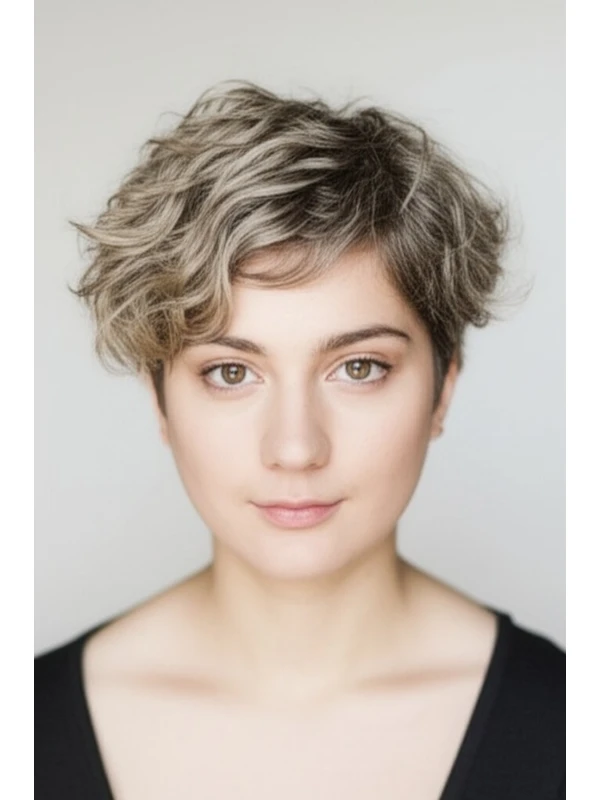#The Hime Cut: A Modern Twist on Classic Japanese Style
The hime cut is having a moment! This striking hairstyle has roots in traditional Japanese culture, but it’s now being embraced worldwide for its unique blend of boldness and elegance. If you're looking for something different that commands attention, the hime cut might be your next style adventure. Let's dive into everything you need to know.
#1) Background & Definition: What is a Hime Cut?
"Hime" (姫) translates to "princess" in Japanese, and this hairstyle truly embodies regal vibes. It’s characterized by blunt, sharply angled bangs that frame the face like a royal crown. The rest of the hair falls in longer layers, creating contrast and visual interest.
Key Features:
- Sharp Bangs: This is the defining feature – think precise, geometric lines rather than soft, blended bangs.
- Longer Lengths: Hime cuts are almost always medium to long, typically falling below the chin or longer.
- Layering Contrast: The length difference between the blunt bangs and the rest of the hair is crucial for creating a dramatic effect.
- Symmetry & Clean Lines: The overall look emphasizes symmetry and clean edges.
Typical Length Ranges: Chin-length to shoulder-length or longer.
Alternative Names: You might also hear it called "princess cut" or “Japanese princess bangs.”
#2) Face Shape Fit: Finding Your Best Angle
The hime cut's sharp angles can dramatically impact how it suits your face shape. Here’s a breakdown:
- Oval Faces: Lucky you! Hime cuts generally look fantastic on oval faces because the balanced proportions work well with the style's geometry. Experiment with different bang lengths – shorter bangs emphasize cheekbones, while longer ones elongate the face further.
- Round Faces: The angles of the hime cut can help to slim a round face. Opt for slightly longer bangs that hit just below the eyebrows and consider adding subtle layers around the sides to create more definition. Avoid overly blunt, short bangs which could accentuate roundness.
- Square Faces: Soften those strong jawlines! The sharp angles of hime bangs can be softened with a slight curve or by angling them forward rather than straight across. Layering throughout the hair will also help break up the angularity.
- Heart-Shaped Faces: Hime cuts can balance a wider forehead in heart shapes. Slightly longer, side-swept bangs work well to soften the face and draw attention away from the widest part of your face (the forehead).
- Diamond Faces: The hime cut's angles can highlight diamond faces’ structure. Experiment with varying bang lengths – shorter for a bolder look, or longer to create more softness around the cheekbones.
- Oblong Faces: Avoid very long bangs that will further elongate your face. Keep the bangs at eye level or slightly below and consider adding volume through layers to make the face appear wider.
#3) Body Proportions & Height Guidance: Tailoring the Silhouette
The hime cut isn't just about your face – it affects your overall silhouette too!
- Petite: Shorter lengths (chin-length or slightly below) work best for petite frames, preventing the hair from overwhelming the body.
- Average: Most lengths will suit an average height and build. Consider layering to add volume if you have finer hair.
- Tall: Longer hime cuts that fall past the shoulders can create a balanced look for taller individuals.
- Narrow Shoulders: Adding layers around the face creates visual width, balancing narrow shoulders. A side part also adds asymmetry and dimension.
- Broad Shoulders: Avoid excessive volume at the sides of your head; keep it more concentrated on top to minimize shoulder width. A middle part can help balance proportions.
- Short Neck: Longer hime cuts (shoulder-length or longer) can visually lengthen a short neck, while keeping bangs shorter helps avoid emphasizing the neckline.
- Long Neck: Shorter hime cuts that hit at the chin or collarbone will flatter a long neck without creating too much vertical space.
#4) Works Best With Hair Types & Densities: Finding Your Sweet Spot
The hime cut’s success depends on your hair's texture and density.
- Straight Hair: This is ideal! Straight hair showcases the sharp lines of the bangs beautifully, making styling easier.
- Wavy Hair: Wavy hair can work well, but requires more effort to keep the bangs sleek. A strong-hold serum or gel will be your best friend.
- Curly/Coily Hair: While possible, this cut needs careful consideration and a skilled stylist experienced with textured hair. The bluntness of the bangs might not translate well without significant manipulation. Shrinkage is key to consider – what looks like a long bang when dry will be much shorter when wet!
- Fine Hair: Layers are essential to create volume and prevent the style from looking flat.
- Medium Hair: The hime cut generally works well with medium density hair, allowing for good shape and movement.
- Thick Hair: Thinning out layers is crucial to avoid a bulky look.
Density Tips: Communicate your hair's density clearly to your stylist. Thicker hair will need more thinning; finer hair may benefit from texturizing techniques that add volume without sacrificing length.
#5) Styling Variations: From Casual Cool to Evening Glam
The beauty of the hime cut lies in its versatility.
- Sleek vs Textured: Sleek styles are polished and formal, while textured versions (with more layers and movement) are relaxed and edgy.
- Middle vs Side Part: A middle part emphasizes symmetry, while a side part adds softness and asymmetry.
- Fringe Variations: Play with the length – shorter for boldness, longer for subtlety. Slightly curved or angled bangs soften the look.
- Occasion Styling:
- Casual: Air-dry with a texturizing product for effortless cool.
- Office: Straighten the bangs and smooth the rest of the hair for a professional appearance.
- Evening: Add curls or waves, use shine serum for added glamour.
#6) Maintenance: Keeping Your Hime Sharp
- Trim Cadence: Every 4-6 weeks to maintain the sharp angles and prevent split ends.
- At-Home Routine: Gentle shampoo/conditioner, leave-in conditioner (especially important for textured hair).
- Heat vs Air-Dry: Minimize heat styling whenever possible. When using heat tools, always use a protectant spray.
- Product Checklist: Shampoo & Conditioner, Leave-In Conditioner, Heat Protectant (if using), Smoothing Serum/Gel (for sleek bangs), Texturizing Spray (for volume).
- Estimated Daily Styling Time: 15-30 minutes, depending on hair type and desired style.
#7) Grow-Out Roadmap: The Evolution of Your Style
- Months 1-3: The sharp lines are most noticeable; regular trims are essential to maintain the shape.
- Months 3-6: Bangs start to soften, layers blend more seamlessly. Consider slightly lengthening them if desired.
- Beyond 6 Months: The style becomes softer and more blended. You can either embrace this evolution or schedule a trim to refresh the original hime cut shape.
#8) Color Pairings: Enhancing Your Look
- Cool Undertones (ash blonde, cool brown): These shades complement the sharp angles of the cut for a modern, sophisticated look.
- Warm Undertones (golden blonde, warm brunette): Add warmth and dimension. Consider balayage or highlights to enhance the layers.
- Low-Commitment Options: Root shadows or glosses can add depth without a full color change.
#9) Season & Occasion Guide: Adapting Your Style
- Spring/Summer: Embrace lighter colors and textured styles for a fresh, effortless vibe.
- Fall/Winter: Richer tones (chocolate brown, deep burgundy) and sleek styling create a cozy, sophisticated look.
- Work: Sleek and polished – minimal fuss.
- Weddings/Parties: Embrace curls, waves, or updos to elevate the style for special occasions.
#10) Cost & Time: What to Expect
- Salon Time: Typically 1.5 - 2.5 hours, depending on hair length and styling complexity.
- Estimated Price Range: Expect a slightly higher price point than a standard haircut due to the precision required – generally in the upper-middle range of salon prices.
#11) Pros & Cons: Weighing Your Options
Pros: Striking, unique, versatile (with styling), flattering on many face shapes. Cons: Requires regular trims, can be high maintenance for certain hair types, not as forgiving if cut incorrectly.
#12) Salon Consultation Script: Questions to Ask Your Stylist
- "I'm interested in a hime cut. Can you assess my face shape and hair type to determine if it will work well?"
- “What length of bangs would best suit my features?”
- “How can we adapt the style to account for [my hair texture/density]?”
- "Can you show me examples of hime cuts on people with similar hair types and face shapes as mine?"
- "What products will I need at home to maintain this style, and how should I use them?"
#FAQs: Your Burning Questions Answered
- Is a hime cut difficult to achieve? It requires precision, so it’s best done by an experienced stylist.
- Can I do the bangs myself? Trimming the bangs yourself is risky; leave that to a professional!
- What if my hair shrinks significantly when dry (curly/coily)? Discuss this with your stylist before getting the cut, and adjust the bang length accordingly.
- Can I wear glasses with a hime cut? Absolutely! Consider frame shapes that complement the angles of the bangs.
- Does it require lots of product? Not necessarily – but some products (smoothing serum, texturizing spray) can enhance the style.
- How different is this from curtain bangs? Curtain bangs are softer and more blended, while hime bangs are sharp and geometric. They have very distinct looks!
